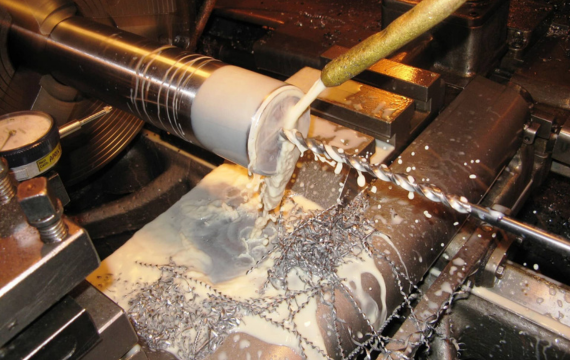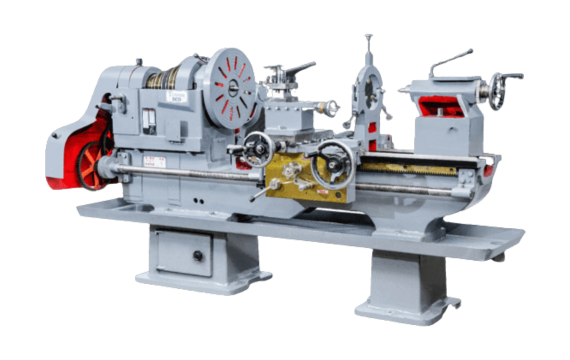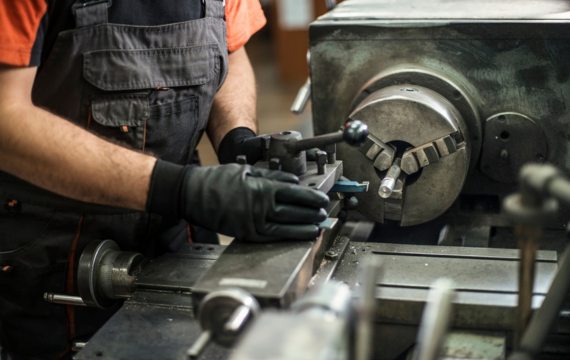Definition and Purpose of a Lathe
A lathe is a device used in manufacturing which holds and rotates the work piece on its axis by a point of symmetry. This rotation helps the lathe to be used in cutting, sanding, drilling among other functions of turning the material. The principal functional activity of the lathe is turning, hence the major purpose of the lathe is to bring the piece being worked on to the required shape.

Main Components of a Lathe
Here’s a look at the key parts of a lathe:
- Bed: The bed is the base of the lathe. It provides support and stability for the entire machine. It is made of cast iron to provide a solid foundation when conducting operations on the lathe.
- Headstock: The is located at the left side of the lathe and this is where motor and spindle are fixed. As for the equipment with workpieces, the most familiar element is the spindle that grips the workpiece and rotates it. The motor powers this rotation.
- Tailstock: To the right side of the lathe there is mounted a component known as a tailstock. It supports the other end of the workpiece. The tailstock can be adjusted to accommodate different lengths and hold tools for drilling operations.
- Carriage: The carriage holds the cutting tools. It moves along the bed, allowing the tools to cut and shape the workpiece. Components of the carriage are cross slide, compound rest as well as tool post.
- Chuck: The chuck is a device, which gave to the work piece in the lathe and does not allow move. It ensures the workpiece remains steady during operations. Some of the chucks include; Three jaw chuck used for round job and four jaw chucks used for irregular jobs.
Types of Lathes
Here’s a breakdown of different lathe types:

- Engine Lathes: Engine lathes are widely used and are general purpose tool. These knives are specific for all levels of employments, from simple to complex kinds of tasks, and are often multi-functionary.
- Turret Lathes: Turret lathes are designed for repetitive production. They feature a turret that holds multiple tools, allowing for quick changes between operations. This efficiency makes them ideal for high-volume production.
- Toolroom Lathes: Toolroom Lathes: One of the special uses of toolroom lathes is fine work. They are mostly applied in organizations that need accurate equipment, for example, production of tools or construction of other small, precise items.
- CNC Lathes: CNC stands for Computer Numerical Control and lathes operated by a computer rather than by hands. They offer high precision and can automate complex tasks. CNC lathes are ideal for intricate details and high-volume production.
- Bench Lathe Machine: Bench lathes are small and the can be bolted to a workbench. These are appropriate for using in small-scale or home-based projects for they can multitask in small ways.
- Automatic Lathe Machine: Automatic lathes are depending on high-speed continuous production. Some of them can run with more or less intervention from a human operator that makes them suitable for reproduction of similar body parts in large quantities.
- Special Purpose Lathe Machine: Hanging or Special purpose lathes are used to be designed for certain operation or used in a particular field. They are tailored to perform particular operations or work with unique materials.
- Speed Lathe Machine: They are usually characterized by their high speeds in their line of operation. They are applied in the cutting and forming of wood or metals at a high speed preferably in applications where speed is considered significant.
Common Operations Performed on a Lathe
Here are some typical operations you can perform on a lathe:
- Turning: Burning is the process where material is trimmed from all around the work piece to get a circular shaped one. This is accomplished utilizing a cutting tool that travels along a direction, which is parallel to the axis of the workpiece.
- Facing: Facing knurls forms an even plane at the end of the work piece. The cutting tool vibrates in a direction of the workpiece cross-section to create a smooth end.
- Drilling: Drilling refers to making holes on the workpiece. The workpiece is rotated between the centers while the tailstock holds a drill bit which is moved forward to form the required hole.
- Knurling: Knurling gives a pattern of usually a cross-hatch on the surface of a work piece. This is usually done on grips on handles or and other items where a better grip is required.
- Parting/Cutting: Finally, last stage among operation is parting; it is the process of cutting the end product from the raw material. This is accomplished by using a parting tool where they make a cut on the workpiece until the desired point.
Applications of Lathes in Various Industries

Lathes are used in many industries of our production targeting on different aims. In manufacturing, lathes turn parts for machines and devices, producing accurately proportioned and finished surfaces. In automotive applications, automotive lathes produce parts such as shafts, gears, and bearings that are central to the performance of automobiles.
In Aerospace industry, lathes make tiny parts of aircrafts that are very rigorous in safety and performance. Wood lathes craft intricate designs and shapes in furniture and decorative items, allowing for detailed and artistic results. In prototyping, lathes help create new products and check their efficiency, giving designers and engineers the ability to refine designs before production.
Safety Tips for Operating a Lathe
To ensure safe operation of a lathe, follow these tips:
- Wear PPE: On safety, you should wear eye protection because the project involves handling of materials that may produce flying debris and wear gloves since materials are mostly handled by hand.
- Keep Work Area Clean: One should also make sure that there are no objects, or debris on the vicinity of the lathe while it is operating. This is because a clean environment where the employees are subjected to entails that incidence of injuries will be rare.
- Check Machine Before Use: At this make certain that all parts of the lathe and its accessories are properly fixed and in good condition. Check physically on the machine for areas that are worn out and those which may have been damaged.
- Avoid Loose Clothing: Lose clothing should not be worn because they may entangle themselves with the machine and possibly choke the person. It must be noted that the hairstyle should be off the face and preferably tied, no jewelry should be worn.
- Follow Operating Procedures: To acknowledge this right, follow the guidelines of use recommended by the manufacturer of the lathe. Never bypass safety features or take shortcuts.
Choosing the Right Lathe for Your Needs
Choosing the right lathe for your needs involves considering several factors. First, the size of the lathe depends with the size of the working area and the intended projects that the person desires to execute. There are large lathes for a large project and small ones for a small one, or if you want more delicate work.
Next, the type of lathe should depends on the material to be worked on and the tasks to be accomplished. For instance, if you are working on wood; the most appropriate lathe to use is the wooden lathe. Regarding metalworking, an engine or CNC lathe might be more suitable. Additionally, consider specific features like variable speed control, tool compatibility, and ease of use. These features can enhance the functionality and convenience of the lathe.
FAQs
- What’s the Difference Between an Engine Lathe and a CNC Lathe.
An engine lathe is operated manually while a CNC lathe is computer operated being more precise and often automatic in operation.
- How Do I Maintain a Lathe?
Regular cleaning and lubrication of the lathe will ensure smooth and efficient operation. Follow the manufacturer’s maintenance schedule and guidelines.




